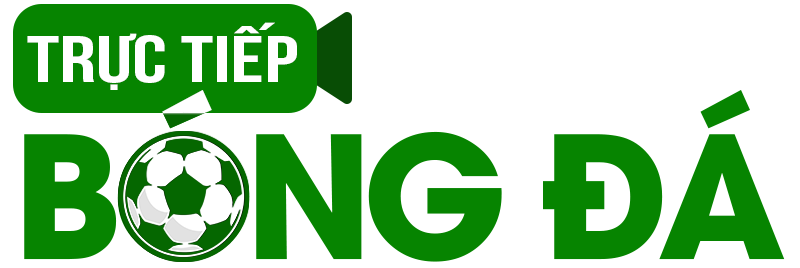RA is not rare, and its course if often not benign.The prevalence is around 1%, so 1 in 100 people have this condition.Females are 2-3 times more likely to get it, and the peak incidence is around 35-50 years of age.Of identical twins, the concordance is 15-20%, which suggests that non-genetic factors play an important role.We don’t know what causes RA, some infectious agents like Mycoplasma and Ebstein-Barr virus have been suggested to be involved.
So what is RA? Well, it’s a condition that can present with a bunch of general symptoms like malaise, weight loss and fatigue, and also morning stiffness(of the bad kind), mainly in the small joints of the fingers, but this can involve pretty much any joint.Morning stiffness means that the joints are stiff and sore when you get up, and with movement and using them, the stiffness somewhat improves during the day.
Along with those general symptoms RA presents with joint swelling and pain, which is often symmetrical(like, both elbows, both wrists), the joint symptoms are chronic, and ultimately lead to joint destruction.Other tissues, like lung, skin, heart or eyes, can also be affected.
The genetic component is proven by the fact that >90%of RA sufferers share the HLA DR4/DR1 cluster.All sorts of immune cells and substances get activated in RA and contribute to joint and bone destruction.Here’s what bone destruction looks like on Xray:
After 5 years of disease, approximately 1/3 of patients are unable to work; after 10 years, approximately half have substantial functional disability. Poor prognostic factors include persistent synovitis, early erosive disease(these are bone changes that you can pick up on Xray), extra-articular findings (including subcutaneous rheumatoid nodules), positive serum RF findings, family history of RA, male sex, and advanced age.The life expectancy of RA patients is shortened by 5-10 years, mainly because of cardiovascular complications(RA patients have a 60% higher risk of dying from a cardiovascular cause), or adverse affects of the therapy itself(like ulcers and GI bleeding, or hematological disorders).
Now, given that RA can present with other symptoms apart from sore stiff swollen joints, we need a classification of symptoms, and if you score 4 out of 7, you likely have RA:
The American College of Rheumatology developed the following criteria for the classification of rheumatoid arthritis (RA).
1. Morning stiffness: This occurs in and around the joints and lasts at least 1 hour before maximal improvement.
2. Arthritis of 3 or more joint areas: At least 3 joint areas simultaneously have soft-tissue swelling or fluid (not bony overgrowth) observed by a physician. The 14 possible areas include the right and left proximal interphalangeal (PIP), metacarpophalangeal (MCP), wrist, elbow, knee, ankle, and metatarsophalangeal (MTP) joints.
3. Arthritis of hand joints: At least one area in a wrist, MCP, or PIP joint is swollen.
4. Symmetric arthritis (simultaneous involvement of the same joint areas on both sides of the body): Bilateral involvement of PIPs, MCPs, and MTPs is acceptable without absolute symmetry.
5. Rheumatoid nodules: Subcutaneous nodules are present over bony prominences or extensor surfaces or in juxta-articular regions.
6. Serum RF: Abnormal amounts of serum RF(rheumatoid factor, measured by a blood test) are demonstrated by any method for which the result has been positive in fewer than 5% of healthy control subjects.
7. Radiographic changes typical of RA on posteroanterior hand and wrist radiographs, which must include erosions or unequivocal bony decalcification localized in or most marked adjacent to the involved joints: Osteoarthritic changes alone do not qualify.
The most commonly affected joints, in decreasing frequency are those in the fingers, wrists, shoulders, ankles, cervical spine(the “neck”), hips, elbows and jaw.
Most other organ systems can be affected by the immune reactions of RA: The heart(infarction, fluid collection/effusion, impaired pump function), the lungs(effusions, fibrosis/stiffening, nodules), the skin, nerves(entrapment, like carpal tunnel syndrome) and eyes.
The progression of RA over the years is measured in 4 stages, from stage 1 with no Xray changes to stage 4 with muscle atrophy, joint destruction and deformity.
Such a stage 3 or 4 looks like this in a wrist:
I won’t go into the differential diagnoses here, there are many, and are a bit beyond the scope of this tute.
As to lab tests, again, there are a million, from basic tests like a full blood count, to inflammation markers like ESR or CRP to immune markers like RF, ANA, ANCA or anti-CCP(the one with the best sensitivity and specificity at present).
How is RA treated? First of all, the treatment of such a complex and potentially debilitating condition requires pharmacological(drugs) and non-pharmacological therapies, such as patient education, physiotherapy, occupational therapy or orthopedic measures.
As to drugs, the rule of thumb is, whatever works in the lowest dose and with the fewest side effects is the drug of choice at any given time during disease progression.And the house of drugs is built from the bottom up, so you start with simple non-steroidal antiinflammatory drugs(if not contraindicated for you because of another medical condition, like asthma or kidney disease)for symptom improvement, possible add some Cortisone if initial symptoms are severe.This is done to give another group of drugs, that can actually slow down or stop the underlying immune reaction, time to kick in.Those are called DMARDs(Disease-modifying antirheumatic drugs), and there seems to be a new one coming out every day, so I’ll only say that these are divided into so-called xenobiotic agents like Gold, Penicillamine, Chloroquine, Sulfasalazine, Methotrexate, Azathioprin and Cyclosporin, and biological agents that block TNF-@ and various immune mediators, like Interleukin-1, e.g.Infliximab.We know that the earlier we use the DMARDs, the better the halting of disease progression.
Another thing RA patients need to be careful with is their neck.The destructive changes in the cervical spine often involve C1-C2, and those patients can be in danger during neck manipulations by osteopaths or physios, and also when they need intubation for a surgical procedure or other medical problem.
